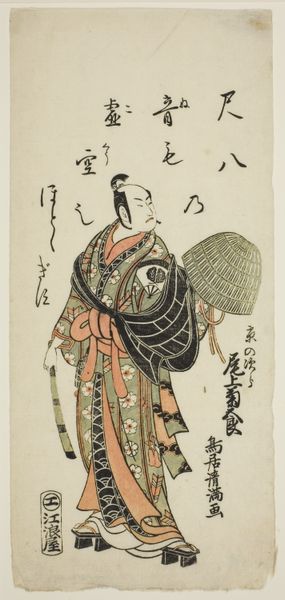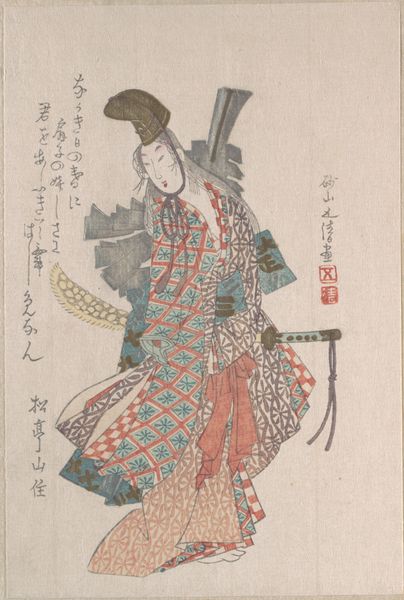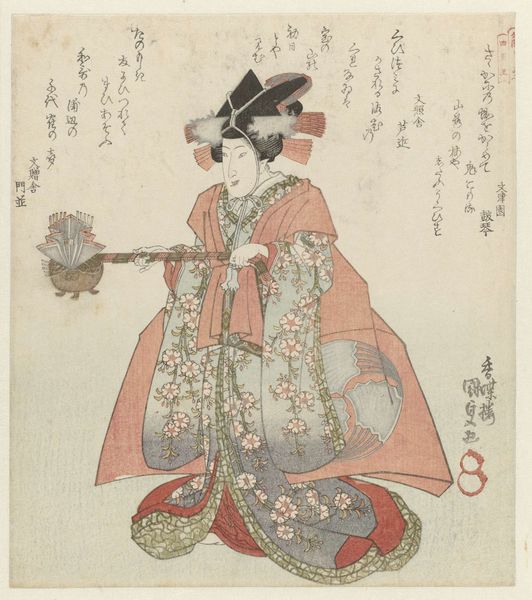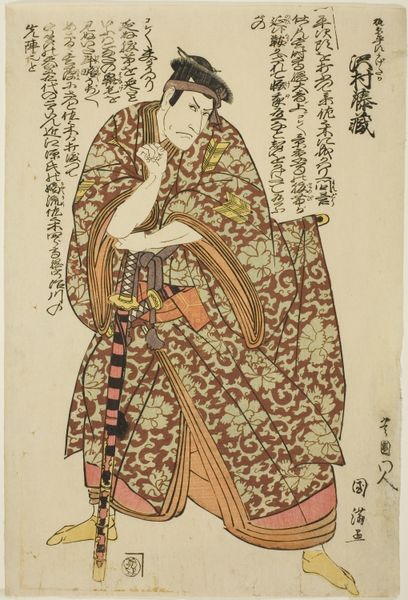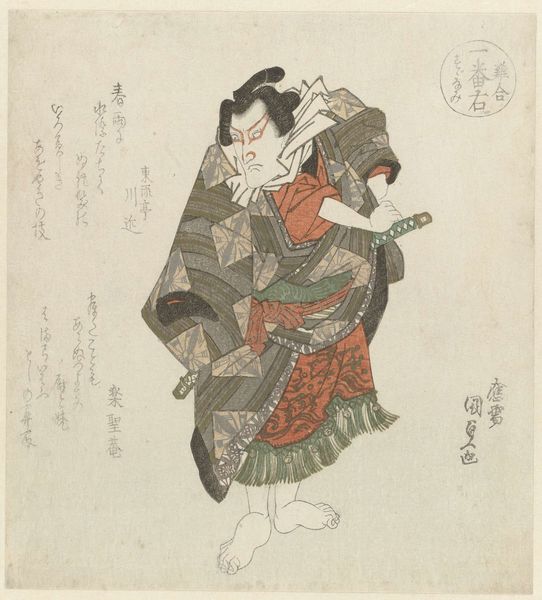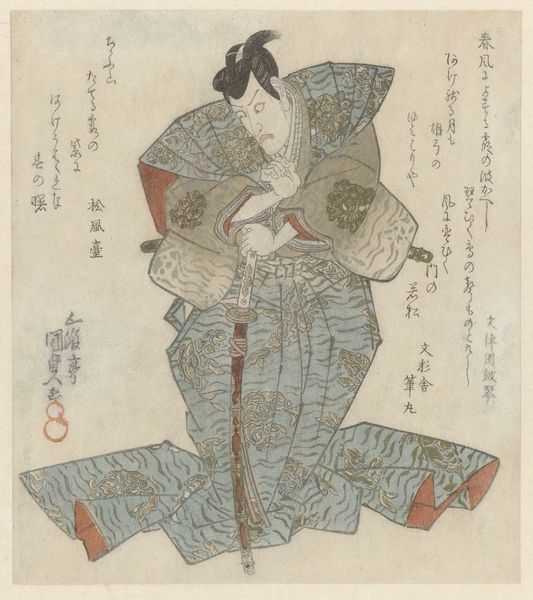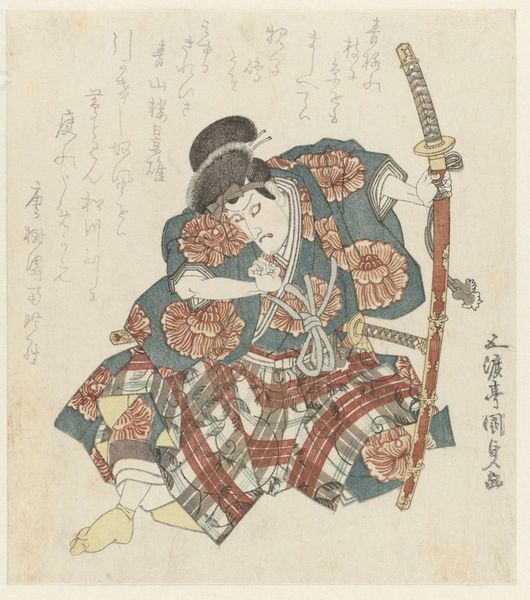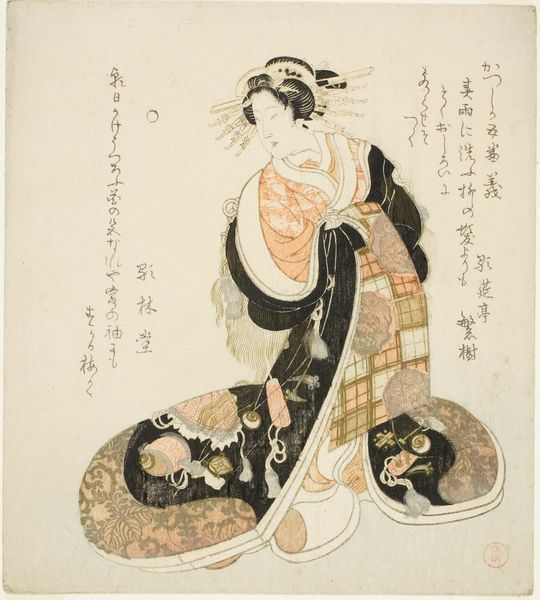
print, woodblock-print
#
portrait
# print
#
asian-art
#
ukiyo-e
#
figuration
#
woodblock-print
#
watercolor
Dimensions: height 209 mm, width 184 mm
Copyright: Rijks Museum: Open Domain
Curator: This is "Vrouw met waaier in haar hand," or "Woman with a Fan," a print from 1823 by Utagawa Kunisada. What strikes you most about her? Editor: It's the pose, that elegant tilt. There’s a wistful, almost performative quality, as if she's caught in a dance or mid-thought. Is she trying to hide behind the fan, or is she just cool? Curator: That's interesting. The fan can have various meanings in Ukiyo-e, ranging from a symbol of status to something that actually indicates longing. Woodblock prints like this, which circulated widely, really shaped public perceptions and even fantasies around women's roles. Editor: You know, it almost feels like the print is also about the layers of artifice. We've got a woman stylized for the male gaze, filtered through the lens of ukiyo-e and mediated by woodblock. Curator: Indeed. The ukiyo-e genre, literally "pictures of the floating world", was designed to show life at a remove—celebrating fleeting beauty and ephemeral moments. Her ornate kimono isn't just fabric; it's visual theatre, right? Notice how the intricate pattern suggests opulence, but the simplified execution reminds us it is print media meant for the masses. Editor: Absolutely, and that color palette! That blend of pale creams and rust tones is just gorgeous, not so vibrant, lending the portrait the muted, refined emotion. Does it speak to her status, or just Kunisada’s sense of color? Curator: Both, I suspect. The economics of the woodblock trade played a large part. More colors equaled more expense. The balance struck is telling: enough detail to suggest her world, but not so much that it alienates the common buyer. The choice reflects artistic intent, but also what the market allowed. It reminds me of how photography allowed ordinary people to document family occasions when painting had largely been the purview of the well off. Editor: Right! So this woman, holding her fan, ends up symbolizing this larger cultural and technological landscape. Seeing her today it almost feels voyeuristic given we are aware of this historical lens. Curator: Exactly. Utagawa’s art gives us such vivid historical artifacts, which when experienced directly still pose ethical and aesthetic questions. Editor: I agree, an image with a past and maybe a reflection on our own future as spectators.
Comments
No comments
Be the first to comment and join the conversation on the ultimate creative platform.
